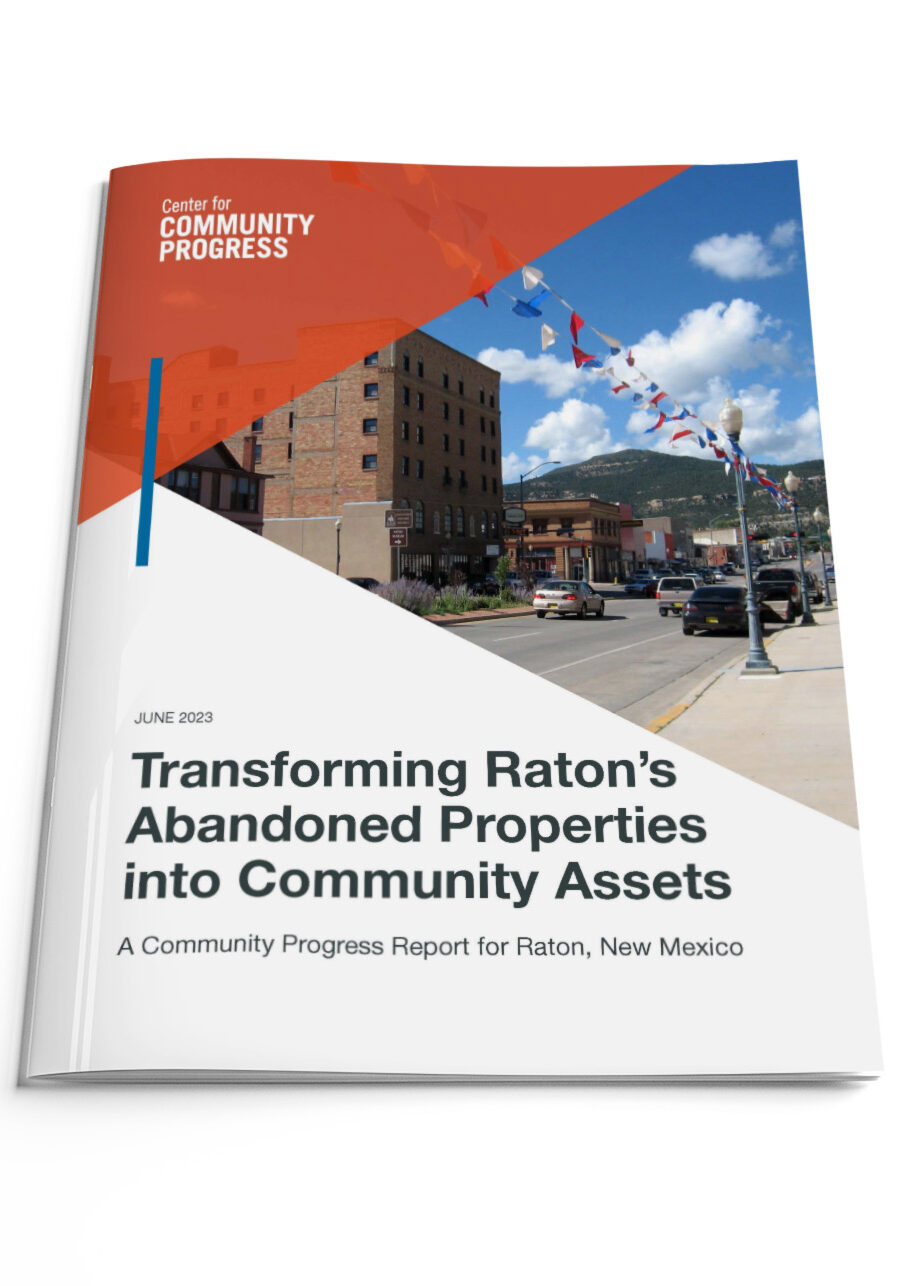Transforming Raton’s Abandoned Properties into Community Assets
A Community Progress Report for Raton, New Mexico
Topic(s): Land Banks, Local Analysis, Property Tax System
Published: June 2023
Geography: New Mexico
Raton is a special place, rich with history, community pride, and optimism for its future. Over the last few decades, this rural city in northeastern New Mexico has experienced major shifts—like the end of coal mining and horse racing—that have resulted in a dramatic loss of population and a growing inventory of vacant houses, storefronts, and lots. Steadfast leaders in local government and the community responded by deploying new tools like the vacant building registration ordinance (VBRO) to hold absentee owners accountable, and leveraged City resources and expertise to attract new investment and industry, such as the El Raton Media Works, a new nonprofit media arts and production company, and Moss Adventures, an outdoor experience and expedition company.
Even with the dedication of a small but mighty team of local leaders and lots of elbow grease, vacant, abandoned, and deteriorated (VAD) properties that do not represent the pride residents have in Raton, remain. These properties include former homes in residential neighborhoods and empty storefronts in the main business district. They symbolize loss and disinvestment.
Persistent VAD properties can be attributed to a variety of factors, including legal and financial hurdles. For example, some are owned by diffuse heirs who long ago abandoned the property or who do not even know they have a claim to a fraction of a property in Raton. Some VAD properties are owned by out-of-state speculators who buy property sight unseen and without a plan for basic upkeep and maintenance, simply hedging their bets on the future of Raton. Other VAD properties may be owned by locals who want to make a significant investment yet find themselves hamstrung given the value of the property is much less than the back taxes, other public debt, and the reasonable cost of remediation. In each scenario there are few paths to remove these barriers, obtain flexible funds to rehabilitate the property, and write a new narrative for the community.
This report provides local leaders with our observations and recommendations for addressing that inventory of harmful, persistent VAD properties. It uplifts local government and community leaders’ work while recognizing limitations in data, capacity, funding, and policy. We hope this report sparks discussions in Raton and throughout New Mexico. We believe leaders should design policy and programmatic reforms to place Raton’s future in hands of a community that wants to sustain a proud legacy, rather than those hedging their bets on a short-termproperty investment.
Raton is at a critical and exciting juncture—leaders are balancing the desire for immediate investment with longterm planning, preserving the city’s culture for current generations of families while welcoming new neighbors and businesses. As Interstate 27 expands, potentially making Raton home to one of the busiest intersections in the country, City leaders must balance the need for safe, affordable housing and quality jobs with the growing interest from outside investors. Other communities at similar junctures often wish they could turn back the clock and do things differently, like ensuring investment benefits long-time and low-income residents too. By focusing on transforming VAD properties into community assets, Raton can forge a legacy that current and future residents look back on with pride.

Topic(s): Land Banks, Local Analysis, Property Tax System
Published: June 2023
Geography: New Mexico
Related Publications
Other Related Content
Subscribe to join 14,000 community development leaders getting the latest resources from top experts on vacant property revitalization.
